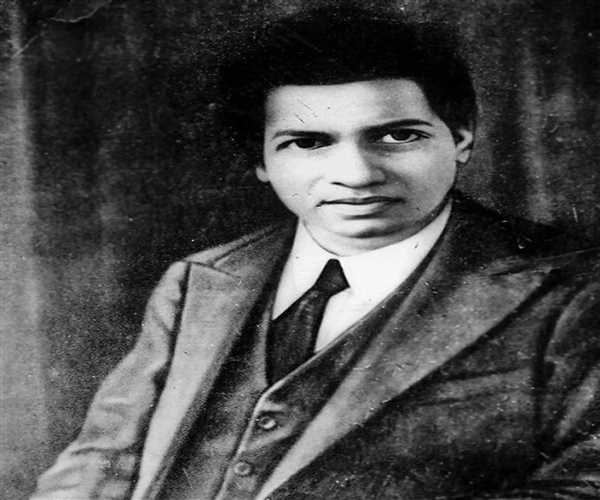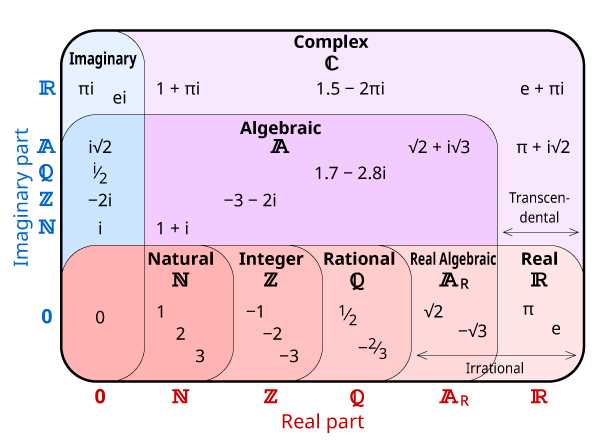Search here

07-Aug-2023 , Updated on 8/7/2023 10:21:03 PM
Everything you need to know about the mathematics guru "Ramanujan"
Highlights
- Srinivasa Ramanujan- A renowned Indian mathematician born on December 22, 1887, in Erode, Tamil Nadu, India.
- Self-Taught Genius- Ramanujan was largely self-taught and had no formal training in mathematics beyond high school.
- Incredible Intuition- Known for his exceptional intuition and ability to discover mathematical relationships and identities without formal proofs.
- Landmark Contributions- Made significant contributions to mathematical analysis, number theory, infinite series, and continued fractions.
- Modular Forms- His work on modular forms and mock theta functions laid the foundation for later developments in the field.
- Partnership with G.H. Hardy- Developed a productive collaboration with British mathematician G.H. Hardy, who recognized and supported Ramanujan's talents.
- Ramanujan-Hardy Number- Discovered the famous "taxicab number" (1729), also known as the Ramanujan-Hardy number, with a unique property.
In the annals of mathematics, the name Srinivasa Ramanujan shines as a beacon of brilliance, a self-taught prodigy whose contributions continue to baffle and inspire mathematicians and scholars alike. Born on December 22, 1887, in the town of Erode, Tamil Nadu, India, Ramanujan's short yet extraordinary life was marked by an uncanny ability to unravel complex mathematical truths seemingly from thin air. His unquenchable thirst for knowledge, coupled with an innate understanding of numbers and patterns, resulted in a legacy that reshaped the landscape of mathematics and continues to influence generations of mathematicians to this day.
Early Life and Education
Ramanujan's journey into the world of mathematics was unconventional, as he lacked formal training and exposure to advanced mathematical concepts during his early years. His family, though supportive of his interests, faced financial constraints that prevented him from pursuing higher education . Despite these obstacles, Ramanujan's fascination with numbers led him to voraciously devour mathematical texts and solve complex problems on his own.
By the age of 13, Ramanujan had already begun formulating his own theorems and ideas, many of which would later be recognized as groundbreaking contributions. He independently derived results related to number theory, infinite series, and continued fractions, showcasing an innate understanding of mathematical concepts that would have been the envy of even seasoned mathematicians.
His break came in 1903 when he obtained a library copy of George Shoobridge Carr's book "A Synopsis of Elementary Results in Pure Mathematics." This work ignited Ramanujan's passion, and he embarked on a journey of self-discovery, pouring over theorems and equations that would fuel his remarkable journey into the realm of higher mathematics.

Contributions and Collaborations
Ramanujan's work was characterized by his unique ability to generate novel ideas and insights seemingly without the need for extensive formal proofs. He possessed an uncanny knack for discerning patterns and relationships within numbers, leading to discoveries that were ahead of his time. One of his most remarkable achievements was in the field of partition theory, where he developed groundbreaking results related to the partition of numbers into summands.
In 1913, Ramanujan's life took a transformative turn when he began corresponding with British mathematician G.H. Hardy. Recognizing the exceptional talent displayed in Ramanujan's letters, Hardy invited him to Cambridge University. Ramanujan's arrival marked the beginning of a fruitful collaboration that produced a wealth of mathematical advancements. Together, they worked on various topics, including modular forms, elliptic functions, and the famous partition formula – a testament to the power of cross-cultural mathematical exchange.
Ramanujan's Theorems and Formulas
The legacy of Ramanujan is punctuated by a series of profound theorems and formulas that continue to influence mathematics to this day. One of his most celebrated contributions is the Ramanujan-Hardy identity, a beautifully elegant infinite series that remarkably converges to a finite value. This identity has found applications in various branches of mathematics, including number theory , complex analysis, and even theoretical physics.
Another striking result attributed to Ramanujan is his formula for the partition function, denoted as p(n), which provides the number of ways a positive integer n can be expressed as a sum of positive integers. Ramanujan's work in this area laid the foundation for further exploration of partition theory and its applications in combinatorics and mathematical physics.
Transcendental Numbers and Continued Fractions
Ramanujan's fascination with transcendental numbers – those that are not solutions to any algebraic equation with rational coefficients – led him to develop innovative methods for approximating these enigmatic quantities. His work on continued fractions produced remarkable approximations for the mathematical constant π (pi) and the Euler–Mascheroni constant, γ (gamma), among others. These discoveries showcased Ramanujan's unique approach to solving complex mathematical problems and his ability to shed light on previously uncharted territory.

Legacy and Influence
Ramanujan's untimely death at the age of 32, in 1920, left the mathematical world mourning the loss of a true genius. Yet, his legacy lives on through his myriad contributions, which continue to shape modern mathematics. Theorems bearing his name adorn textbooks and research papers, and his methods have paved the way for new insights in fields ranging from number theory to quantum mechanics.
The significance of Ramanujan's work extends beyond his individual theorems and formulas; it lies in his unwavering dedication to the pursuit of mathematical truth, his ability to uncover hidden patterns within numbers, and his audacity to think beyond the constraints of convention. His story serves as a testament to the boundless potential of the human mind and the power of curiosity to transcend barriers.
Srinivasa Ramanujan's journey from humble beginnings to becoming one of the most celebrated mathematicians in history is a testament to the indomitable spirit of human curiosity and the beauty of intellectual exploration. His legacy continues to be an inspiration for aspiring mathematicians and scientists, reminding us that the pursuit of knowledge knows no bounds. Ramanujan's remarkable ability to unlock the secrets of the mathematical universe serves as a reminder that, even in a world governed by numbers and equations, the human imagination remains an inexhaustible source of innovation and discovery.

SEO and Content Writer
I am Drishan vig. I used to write blogs, articles, and stories in a way that entices the audience. I assure you that consistency, style, and tone must be met while writing the content. Working with the clients like bfc, varthana, ITC hotels, indusind, mumpa, mollydolly etc. has made me realized that writing content is not enough but doing seo is the first thing for it.
Join Our Newsletter
Subscribe to our newsletter to receive emails about new views posts, releases and updates.
Copyright 2010 - 2025 MindStick Software Pvt. Ltd. All Rights Reserved Privacy Policy | Terms & Conditions | Cookie Policy